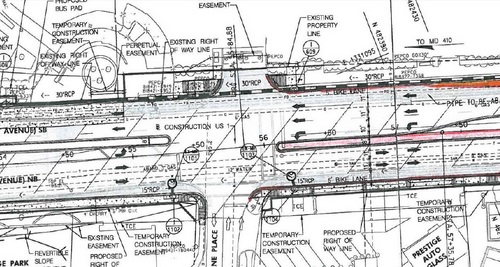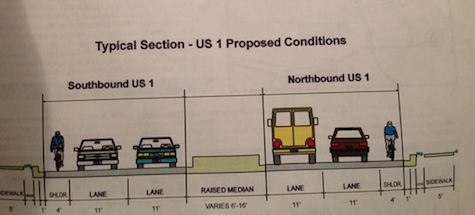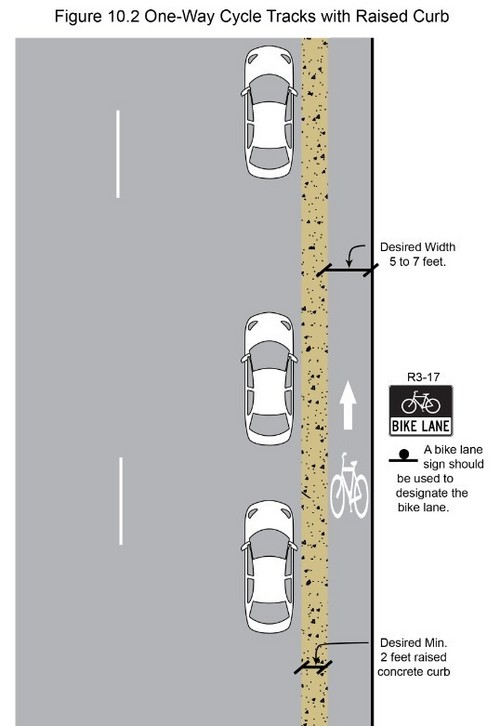There’s plenty of room for safe bike lanes in College Park
Route 1 in College Park is about to undergo a major reconstruction. As long as Maryland’s State Highway Administration doesn’t widen the road’s travel lanes, the project is a chance to make Route 1 safe for people on bikes.
Local residents, the University of Maryland, the City of College Park, and biking advocates all want protected bike lanes on Route 1. SHA engineering guidelines now include design specifications for protected bike lanes.
But SHA is looking into widening Route 1’s existing travel lanes at the expense of safe, usable bike lanes.
Advocates from the Washington Area Bicyclist Association recently measured the existing roadway and lane widths on Route 1 between between the entrance to the University of Maryland and Greenbelt Road. Currently, that stretch is nearly 53 feet wide, with ten-foot travel lanes along the entire segment.
Ten-foot lane widths would mean ample room for safer, buffered and protected bike lanes. On the other hand, making travel lanes wider would lead to higher vehicle speeds that’d then make it more difficult to make downtown College Park walking and biking-friendly. Narrow, unprotected bike lanes are unsafe alongside high-speed, high-traffic roads.
Route 1 can be a road everyone can use
SHA’s original proposal for Route 1 included 11-foot travel lanes plus five feet for bike facilities (a four-foot lane and a one-foot gutter pan). Five feet for bike lanes that run alongside Route 1’s heavy car and bus traffic is not enough space— just look at how rarely people use the unprotected bike lanes on several other busy Prince George’s County roads. The bike lanes would be stressful to use at best, and death traps at worst.
SHA is considering expanding the bike lanes to six feet in total width (a five-foot lane plus a gutter). That would be better, but the bike lanes would still not be protected or buffered, and SHA would still be expanding the current lane widths from 10’ to 11’ for all four travel lanes.
However, if there is room for two 11’ travel lanes and a 6’ bike lane, then there’s also room for a properly buffered and/or protected bike lane. SHA’s minimum recommended width for buffered bike lanes is seven feet: four feet of lane, two of buffer, and a one-foot gutter.
If at least one of the travel lanes stays at ten feet wide rather than going to 11, there would be room for a seven-foot protected bike lane.
If both travel lanes stay at ten feet wide, there would be room for an eight-foot wide bike lane with a three-foot buffer and a five-foot lane. This would make College Park and the university more accessible and safer to travel around by bike. That’s what the community wants and deserves.
There have been several pedestrian deaths on Route 1 in recent years, and SHA has billed Route 1 reconstruction as a safety and accessibility improvement for people who walk and travel by bike.
Completely rebuilding Route 1 is a tremendous opportunity for Prince George’s county to create a walkable, person-friendly corridor in College Park. Buffered or protected bike lanes should be part of that vision. As long as Route 1’s travel lanes don’t get any wider, there’s plenty of room for that.



